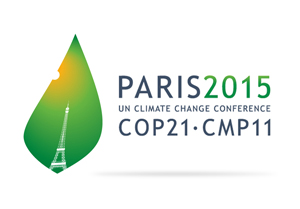Today in Paris 190 nations reached a historic agreement relating to the need to address climate change. How history ultimately views this agreement will now depend on how governments and citizens of the world carry it into the future.
Known officially at The Paris Agreement the historic accord was drafted, tabled and passed by 190 nations during the 21st annual Conference of the Parties (COP21). It marks the first time in history that a comprehensive, and legally binding agreement has been reached, and one where all countries are expected to pitch in. The 1997 Kyoto Protocol for example was an agreement between only the wealthiest nations of the world, but the Paris Agreement now brings everyone into the fold.
Key aspects of the agreement include the following:
- The agreement includes a commitment to keep the rise in global temperatures “well below” 2 C compared to pre-industrial times, while striving to limit them even more, to 1.5 degrees. Scientists generally consider 2 C the threshold to limit potentially catastrophic climate change.
- The deal also calls on developed nations to give $100 billion annually to developing countries by 2020. This would help these poorer countries combat climate change and foster greener economies.
The agreement promotes universal access to sustainable energy in developing countries, particularly in Africa. It says this can be accomplished through greater use of renewable energy.
- Countries will be tasked with preparing, maintaining and publishing their own greenhouse gas reduction targets. The agreement says these targets should be greater than the current ones and “reflect [the] highest possible amibition.”
These targets will be reviewed and revised every five years starting in 2023.
The agreement also says that each country should strive to drive down their carbon output “as soon as possible.”
- The deal sets the goal of a carbon-neutral world sometime after 2050 but before 2100.
This means a commitment to limiting the amount of greenhouse gases emitted by human activity to the levels that trees, soil and oceans can absorb naturally.
Scientists believe the world will have to stop emitting greenhouse gases altogether in the next half-century in order to achieve this goal.
What’s missing from this agreement are any consequences if nations fail to comply to the terms of the agreement. So while it’s legally binding, it remains unclear what will happen should any nation not live up to what they signed onto.
The answer relating to consequences may ultimately not fall within the responsibility of a global legislative entity, but instead within the willingness of global citizens to hold their governments to account.
An agreement is simply that – a sign of willingness by governments to say that climate change is real, precipitated by man, and largely responsible for catastrophic changes that are already beginning to be seen and felt around the world. But being willing to say there is a problem doesn’t solve the problem by itself.
Now it’s up to us.
While leaders will undoubtedly herald this as a deal for the future of our planet, the fact remains that it is a reactive document and not a proactive one. Governments typically respond to problems instead of preventing them. They act when they feel they have to act, and usually the pressure if felt when it’s placed on them by voters and corporations alike.
Now is not the time to celebrate. Rather is time to plan for a sustainable future within the context of a new global framework.
While we may lack for some technological know how as it relates to solving the climate crisis, the truth is that the greatest deficit is one that is psychological and not technological.
We know enough today to solve many of the climate challenges we face, yet we lack the will, the determination and the mindset to make it happen. For too many of us in the most developed countries, we are unwilling to accept a different benchmark for success – one where GDP and the ultimate goal of creating “More” is the benchmark. Instead we need to see growth as not just a multiplier but of an enhancer. Instead of measuring success by “More”, we need to begin seeing the ultimate goal as “Better”. While a better society can grow, it must grow responsibly and with the goals of the collective in mind and not just the few.
What we aspire to needs to have a serious re-think. We can reduce, reuse and recycle all we want, but without a re-thinking of how we got to this point and what is necessary to change, a legal framework of historic proportions may go down as one of the greatest colossal failures of our species.
The governments of the world have perhaps begrudgingly done what many thought couldn’t be done. Now it’s up to you, me and everyone else in between.
The framework is in place and the foundation has been built, now let’s all pitch in and build a sustainable society that will stand the test of time.



Leave a Reply